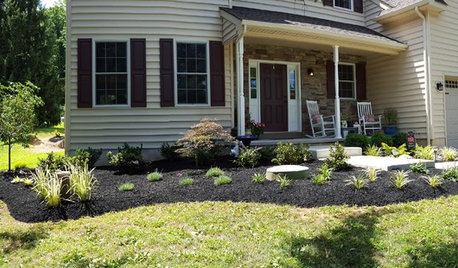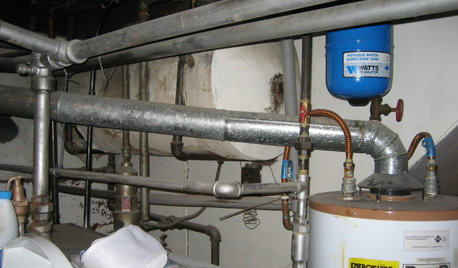What could be causing this?
Timbo424
9 years ago
Related Stories

FUN HOUZZ10 Fantasy Dining Rooms for a Good Cause
Outlandishly creative or subtle and sophisticated, these designer spaces for Serving Up Style 2013 show admirable imagination
Full Story
URBAN GARDENSGardeners Champion Nature's Cause in the City
Garden advocates and artists in San Francisco have joined forces to find creative ways to bring nature back into the urban landscape
Full Story
EVENTS20 Innovative Dollhouses for a Good Cause
Prominent architects scale down for charity, creating dollhouses to be auctioned off to help kids with disabilities
Full Story
LIFECould You Be a Landlord?
Sure, the extra income would be great. But jumping blindly into owning a rental property could be disastrous. Here's what you need to know
Full Story
LIFEIf You Could Talk to Your House, What Would You Say?
‘Pull yourself together’ or ‘thank you for transforming my life’? Notes to homes around the country hit us where we live
Full Story
ARCHITECTUREHouse-Hunting Help: If You Could Pick Your Home Style ...
Love an open layout? Steer clear of Victorians. Hate stairs? Sidle up to a ranch. Whatever home you're looking for, this guide can help
Full Story
MODERN HOMESHouzz Tour: ’50s Ranch Redo Could Be a Keeper
An experienced house flipper puts his creative talents to work on an L.A. remodel designed for his own family
Full Story
EVENTSDesigners Get Creative in a D.C. Show House
With a historic home as a canvas and a worthy cause as an incentive, designers pulled out all the stops for the 2014 project
Full Story
REMODELING GUIDES7 Bad Things Your Home May Be Hiding
What you don't know about your home could cost you during a remodel. Here's what to plan for
Full Story
HOUSEKEEPINGDon't Touch Another Stain Before You Read This
Even an innocent swipe with water may cause permanent damage. Here's what to know about how rugs and fabrics react
Full StoryMore Discussions








dchall_san_antonio
Timbo424Original Author
Related Professionals
Essex Landscape Architects & Landscape Designers · Foothill Ranch Landscape Architects & Landscape Designers · Severn Landscape Architects & Landscape Designers · Brentwood Landscape Contractors · Wakefield Landscape Contractors · Columbine Landscape Contractors · Dallas Landscape Contractors · Doctor Phillips Landscape Contractors · Gresham Landscape Contractors · Lynchburg Landscape Contractors · East Norriton Landscape Contractors · Orangevale Swimming Pool Builders · Phoenix Swimming Pool Builders · Santa Clarita Swimming Pool Builders · West Palm Beach Swimming Pool Buildersdchall_san_antonio
ken_adrian Adrian MI cold Z5
dchall_san_antonio
Timbo424Original Author
ken_adrian Adrian MI cold Z5